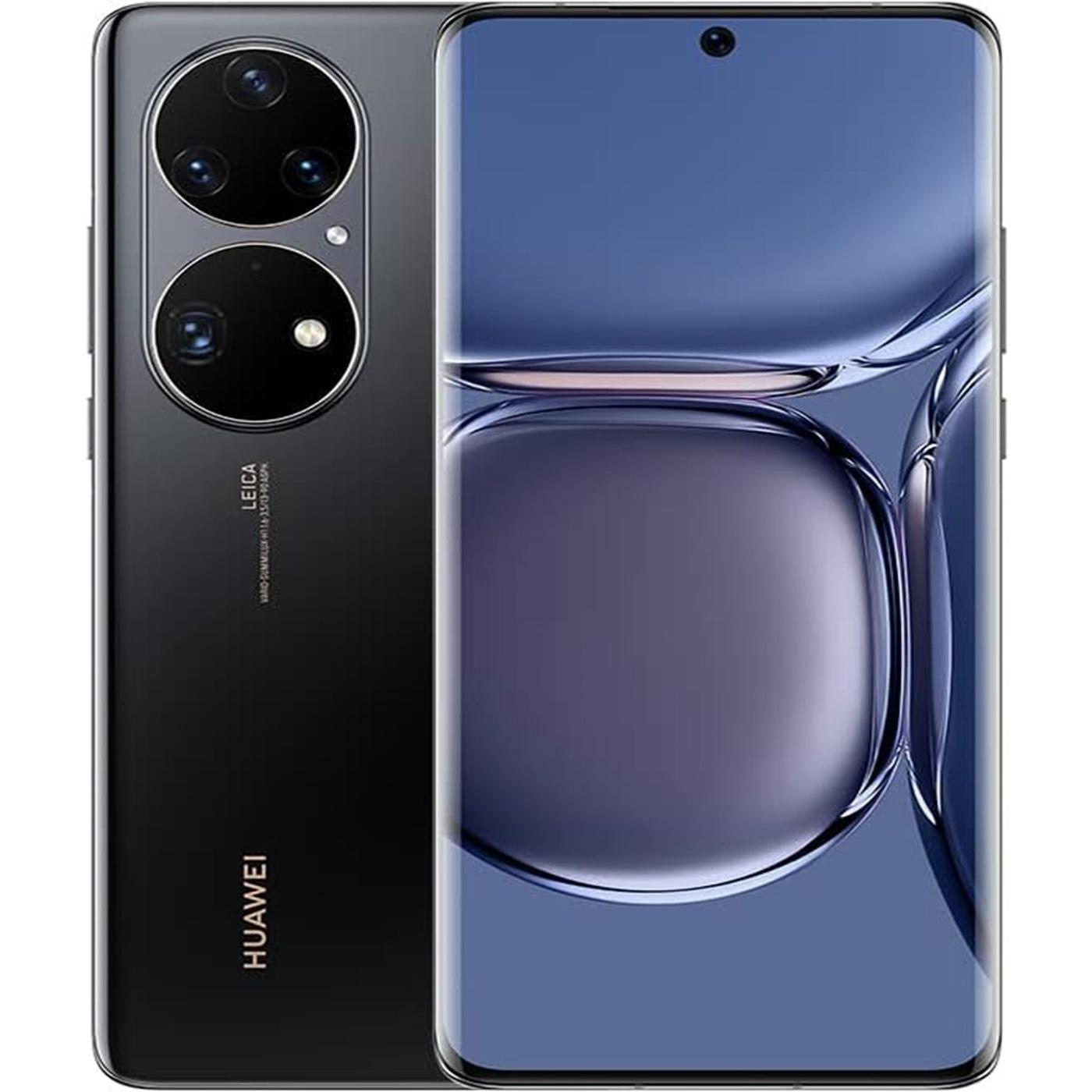The Huawei P50 Pro, launched in 2021, represents one of Huawei’s most advanced flagship smartphones, showcasing the company’s continued focus on cutting-edge photography, sleek design, and premium build quality—even amidst the challenges posed by global trade restrictions. With an emphasis on camera innovation and design excellence, the P50 Pro stands as a statement piece in Huawei's storied P-series lineup.
Design and Build Quality
The Huawei P50 Pro is a masterclass in industrial design, blending elegance with durability. With a curved glass front and back that seamlessly meets the metal frame, the device exudes a premium feel. The symmetrical design, smooth edges, and lightweight build (weighing around 195g) make it both aesthetically pleasing and comfortable to hold.
A defining feature of the P50 Pro is its distinctive dual-matrix camera module on the rear, which hosts the quad-camera setup. It gives the phone a futuristic appearance while emphasizing its photography credentials. The device is available in a variety of sophisticated colors, including Cocoa Gold, Golden Black, Pearl White, and Charm Pink.
It is also IP68-rated, offering dust and water resistance—an essential feature in premium smartphones.
Display
The 6.6-inch OLED display on the Huawei P50 Pro is a visual treat. With a resolution of 2700 x 1228 pixels, it delivers sharp, vibrant, and color-accurate visuals. The 120Hz refresh rate ensures fluid animations and smooth scrolling, while the 300Hz touch sampling rate provides responsive interaction—especially useful in gaming and fast-paced applications.
The curved edges add to the immersive experience, though they may slightly impact how certain apps appear at the very edges. Nonetheless, Huawei has ensured the display remains functional and easy to interact with, offering deep blacks and vivid colors that make video playback and photography viewing a joy.
Camera System
Perhaps the biggest selling point of the Huawei P50 Pro is its camera system, co-engineered with Leica. It features a quad-camera setup:
-
50 MP main sensor (f/1.8, OIS) – Offers stunning detail, dynamic range, and low-light performance.
-
64 MP periscope telephoto lens (f/3.5, OIS) – Enables up to 3.5x optical zoom and 100x digital zoom, with impressive clarity even at high magnification.
-
13 MP ultra-wide lens (f/2.2) – Captures expansive shots with minimal distortion.
-
40 MP monochrome sensor (f/1.6) – Enhances contrast and detail, particularly in black-and-white and low-light photography.
The camera excels in all lighting conditions, offering accurate color reproduction and advanced computational photography features such as AI-assisted scene recognition, HDR, and night mode. The video capabilities are equally robust, supporting 4K recording at 60fps and AIS Pro stabilization, resulting in steady and high-quality footage.
On the front, a 13 MP selfie camera supports wide-angle shots and AI beautification, making it perfect for selfies and video calls.
Performance
Due to US sanctions, the Huawei P50 Pro launched with two chipset variants:
-
Qualcomm Snapdragon 888 4G
-
HiSilicon Kirin 9000 (limited regions)
Both are powerful flagship-level processors, delivering strong performance in gaming, multitasking, and productivity tasks. However, the lack of 5G support due to trade restrictions is a significant drawback for some users in markets where 5G is becoming the norm.
Coupled with 8GB or 12GB of RAM and up to 512GB of internal storage, the P50 Pro handles intensive apps and large media libraries with ease. Huawei’s proprietary Nano Memory Card slot offers additional storage, though this format is not as widely adopted as microSD.
Battery and Charging
The P50 Pro features a 4,360 mAh battery, which offers a full day of moderate to heavy usage. Huawei has optimized its software and display to preserve battery life without sacrificing performance.
The device supports 66W wired fast charging and 50W wireless charging, allowing users to recharge their phones quickly. Reverse wireless charging is also included, enabling the phone to top up other devices like earbuds or smartwatches.
Software: HarmonyOS
One of the most unique aspects of the Huawei P50 Pro is its operating system. Instead of Android with Google services, the phone ships with HarmonyOS 2 (China) or EMUI 12 (global markets)—both based on open-source Android but lacking native Google Mobile Services (GMS).
This limitation means apps like Google Maps, Gmail, and the Google Play Store are not available out of the box. Instead, Huawei offers the AppGallery, Petal Search, and Petal Maps as alternatives. While many popular apps are available, users may need to find workarounds or install APKs manually for specific apps.
Despite this, HarmonyOS/EMUI offers a smooth, highly customizable, and feature-rich experience with seamless multi-device collaboration across Huawei’s ecosystem.
Audio and Connectivity
The Huawei P50 Pro includes stereo speakers that deliver clear, immersive audio. While it lacks a 3.5mm headphone jack, it supports high-resolution audio via Bluetooth and USB-C.
Connectivity options include Wi-Fi 6, Bluetooth 5.2, NFC, and USB Type-C. As noted earlier, 5G connectivity is absent, which could be a limiting factor for future-proofing in some regions.
Final Verdict: Should You Buy the Huawei P50 Pro?
The Huawei P50 Pro is a technological marvel and a photography powerhouse. It’s ideal for users who prioritize camera quality, design, and battery life, and who are open to working without Google services.
Pros:
-
Stunning design and display
-
Best-in-class camera system
-
Excellent performance and battery life
-
Fast wired and wireless charging
Cons:
-
No 5G support
-
Lack of Google Mobile Services
-
App compatibility hurdles in global markets

